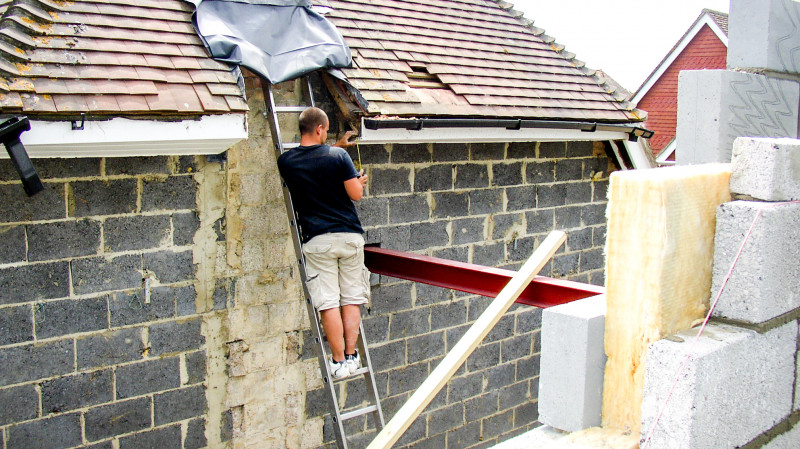You are here: Should I wait for planning or just get on with it?
When you’re keen to get started on a project, should you wait for planning or just get on with it? There are two things to consider at the outset. The first is that not all building projects require planning permission. Often, structures that could be removed, leaving little or no trace of their existence, can be erected without first obtaining permission. A small office in your back garden that doesn’t require foundations would often fall into this category but, whatever your project, we’d always advise at least seeking professional advice before starting work, to save potential hassle, inconvenience and cost further down the line.
The second is that proceeding on a job that does require permission without having obtained it is a risky proposition. Although it is possible to obtain what is known as retrospective planning permission, it is not always a case of the council deciding that once your building is up it is too late to make any changes. Consent may only be granted if you first implement a series of amendments, which could be costly and would require that you call back your builder. As you will know from when you initially booked them in, this could mean having to wait.
When planning permission has been granted, it is done so on the basis of a set of submitted plans, occasionally with conditions attached. Any variation from your plans or non-compliance with the conditions could void that consent in what is known as a planning breach. It would put you in the same position as anyone who started work without obtaining approval. Significant changes may need to be rolled back but, in many instances, it will be possible to obtain permission retrospectively.

Do I need planning permission?
If you are building in England, you can apply for planning through the government’s Planning Portal. In Scotland, use ePlanning.scot, and in Wales use the Welsh Government planning applications portal. If your project is based in Northern Ireland, download application forms from Planning Portal NI. Most applications are ruled upon within two months.
If this sits outside of your timeframe, perhaps because your contractor or a certain piece of equipment is only available for a limited period, you may be able to start work on the parts of the job that don’t require permission. Demolishing existing structures, so long as they aren’t listed or otherwise protected, and the demolition would have no impact on neighbouring properties, is often not subject to planning regulations. However, the rules aren’t always that clear cut. If you are planning to build on the site of a pub, you can’t knock down the existing structure without first gaining permission. Neither can you demolish a building within a conservation area without the relevant consents, even if the building itself isn’t protected.
Either way, don’t demolish a building if doing so would impact the value of the site before obtaining planning permission for whatever you want to erect in its place. If permission is denied you will be left with an empty, useless site which you may be unable to sell on.
Beware of bending the rules
Circumventing regulations when you believe you have found a loophole can be a costly mistake. In 2016, Surrey farmer Robert Fidler was forced to tear down a four bedroom castle he had built on his property several years earlier and hidden behind a stack of hay bales. He was relying on a concept called the four-year rule, under which a building is often considered ‘legal’ four years after its construction unless ruled otherwise.
Unfortunately for Fidler, his local authority ruled that hiding the building behind his walls of hay meant the law, as stated, didn’t apply in his situation. The case went to appeal but the High Court came down on the side of the council and the building had to go.
We would not recommend relying on the four-year rule unless you have taken adequate legal advice.
I’ve been refused permission. Should I go ahead anyway?
If you have been refused permission, don’t just ignore it and carry on regardless. Councils carefully consider every application for planning permission and consult widely, including with local residents, so refusals to grant permission aren’t given on a whim. Its reasons for putting the brakes on your project will be detailed in its decision letter, at which point you can either make changes to your existing plans and submit a further application or, in some cases, lodge an appeal under section 73a of the Town and Country Planning Act 1990.
Appealing a planning permission refusal can be costly if you decide to engage an expert, not to mention time consuming. The government has outlined how the process works, what stages your appeal will progress through and how long you should expect each one to take, from the initial fortnight that could be required to check your appeal is valid, to the delivery of a verdict.
Householder appeals pass through three stages, known as start, event and decision, taking nine, six and four weeks respectively, so you could be left hanging on for five nail-biting months.
By then, you may well be wishing you had waited for planning permission rather than just getting on with it anyhow.
If you are looking to make some home improvements, you may find some of these services useful
Builders
Find local help with a building project
Building Regulations
Find details of local experts who can help with Building Regulations
Architectural Design Services
Find local Architectural Design experts
Structural Inspections
Find an expert to carry out a structural inspection
Building Surveys
I want a local surveyor to do a Building Survey for me

